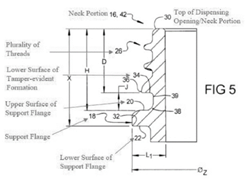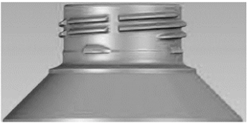The US Court of Appeals for the Federal Circuit addressed the tension between the intrinsic and extrinsic record in claim construction, holding that the intrinsic record should be relied on first. The Court therefore reversed a district court finding of indefiniteness based on dictionary definitions and expert testimony. Grace Instrument Industries, LLC v. Chandler Instruments Company, LLC, Case Nos. 21-2370; -2370 (Fed. Cir. Jan. 12, 2023) (Chen, Cunningham, Stark, JJ.)
Grace owns a patent for a liquid pressurized viscometer used commonly to test the viscosity of drilling fluid that is used to drill oil wells. Grace’s viscometer uses an “enlarged chamber” between a lower chamber and a pressurization fluid inlet. According to the patent specification, this enlarged chamber was designed to reduce the measurement error in prior viscometer models that was caused by the mixing of sample fluid and pressurization fluid or by friction emanating from a seal in the viscometer. Within the lower chamber of the patented viscometer, there is a rotor having a “means for driving said rotor to rotate.”
Grace sued Chandler, claiming that Chandler infringed Grace’s viscometer patent. During claim construction, the district court found that the term “enlarged chamber” was indefinite, and that because it was a “term of degree,” it must be compared against something objective. The district court entered its final judgment in favor of Chandler. Grace appealed.
The Federal Circuit reversed, explaining that the “enlarged chamber[’s]” size did not need to be compared against any baseline object, but rather needed to be “large enough to accomplish a particular function.” The Court relied on the specification, which explained that the viscometer described in the patent reduced the mixing of sample fluid and pressurization fluid that was common in older viscometer models by using an “enlarged chamber.” The Court also cited the prosecution history, where the applicant explained that the invention solved a “long lasting problem” by reducing the measurement error caused by the friction of the seal or mixing of the fluids in older viscometer designs. Thus, the Court reasoned that a person of ordinary skill in the art would understand that the “enlarged chamber” must be large enough to prevent the mixing of the pressurization fluid and sample fluid to avoid the measurement errors associated with prior art viscometers.
Chandler argued that the term “enlarged chamber” was not a term of art. The Federal Circuit agreed but explained that “the intrinsic record sufficiently guides a skilled artisan as to the meaning of the term” as used in the patent. The Federal Circuit found that the district court erred in relying on a dictionary definition (extrinsic evidence) to contradict the meaning of the term found within the intrinsic record. The specification’s instructions for the meaning of a claim term should prevail over extrinsic evidence. Rebuffing Chandler’s argument, the Court explained that the specification does not need to explicitly define the claim term to govern the interpretation of that term.
The Federal Circuit remanded the case to the district court to reconsider indefiniteness in [...]
Continue Reading
read more

 Subscribe
Subscribe




